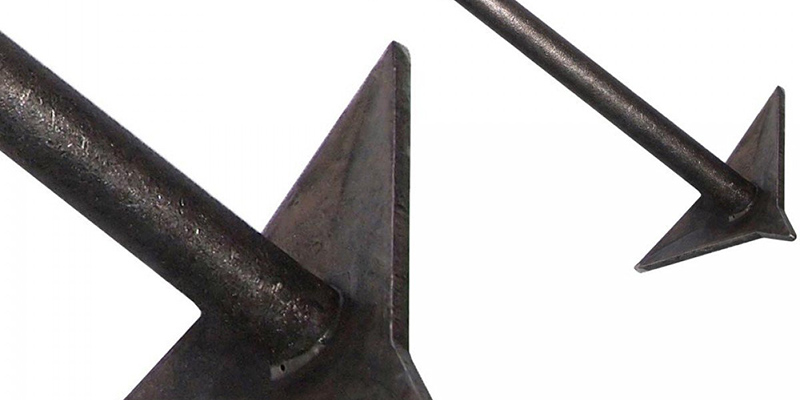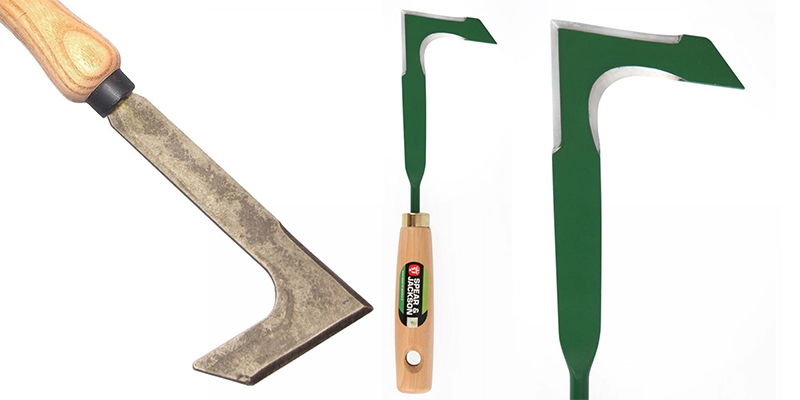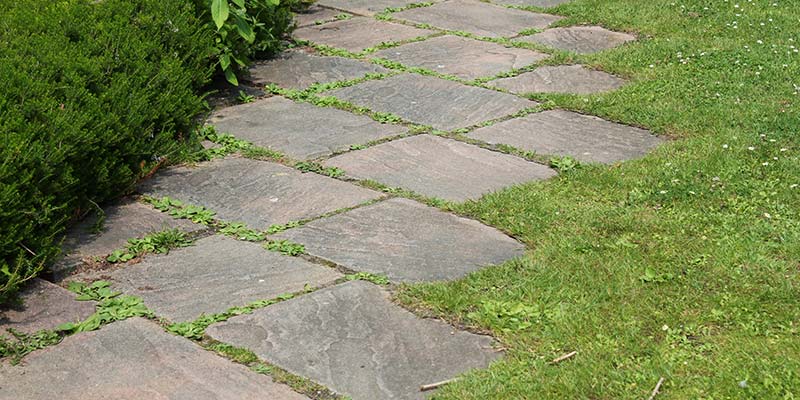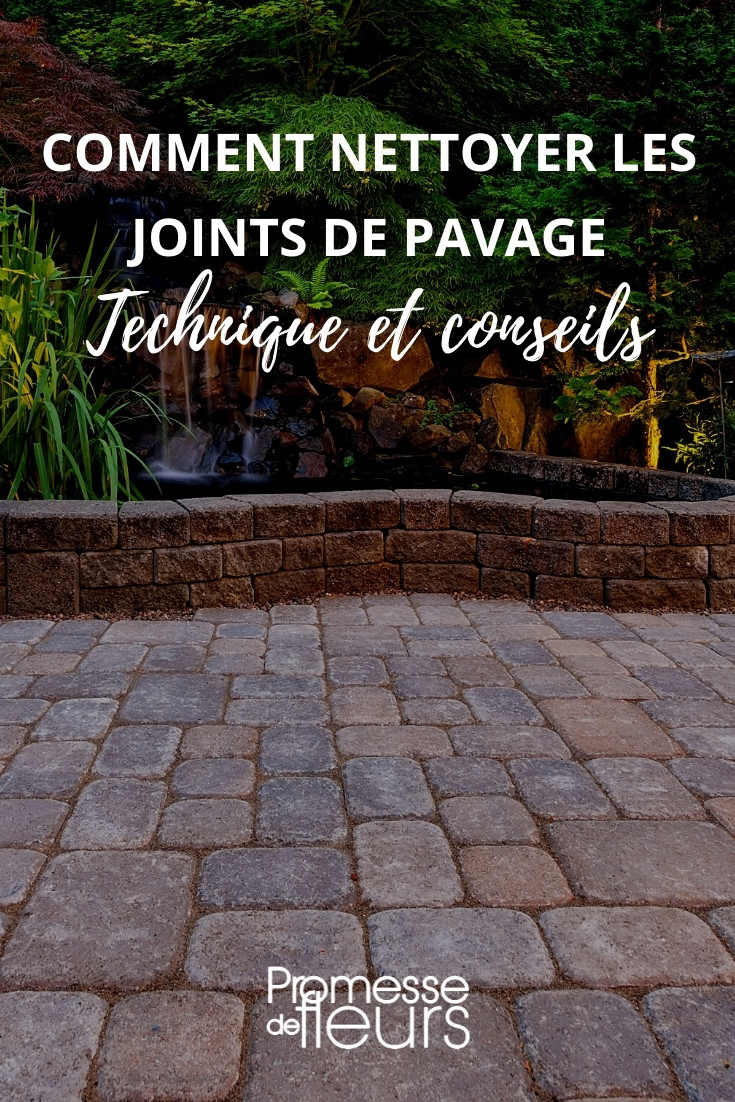It is not uncommon to have a beautiful pedestrian pathway to facilitate access and movement or a paved terrace to enjoy the outdoors. Over the years, the sand or mortar joints in these pavements can become dirty and colonised by weeds or moss. How can you maintain the joints using eco-friendly methods? Are there special tools or miracle recipes to restore the joints to their original condition?
We’ll tell you everything in our tutorial!
Why Clean the Joints of Terraces or Pathways?
The outdoor arrangements of terraces and pathways require some maintenance once the paving stones are laid and jointed with sand or mortar. Over time, the joints can become filled with mould, fungi, lichens, moss, leaf debris, or weeds. Quite quickly, you’ll need to clean the joints, preferably using alternatives to chemical products. How can you clean outdoor paving stones, particularly the joint surfaces?
What Tools to Use for Alternative Weeding?
Cleaning paving stones should be done regularly. When joints are soiled and unwantedly vegetated by weeds, use effective tools to restore their shine, such as:
- The scraper: This tool, with its triangular, well-sharpened head, allows you to scrape the gaps between paving stones to remove weeds, lichens, or debris that have settled there. Whether for joints in tiling or paving, the weeding results with a scraper are quickly visible. A bit of elbow grease is needed if the terrace or pathway surface is large.

- The weeding knife or hoe: With its small, sharp blade, the manual weeding knife or the weeding knife allows you to scrape the joints between paving stones or slabs that make up a pathway or cover a terrace. This quickly eliminates moss and other weeds in sometimes hard-to-reach places. The joints are thus weeded and cleaned in no time.

- The broom brush: It is very similar to an indoor broom, except for the steel or nylon bristles. Regular sweeping over paving stones on a terrace, patio, or pathway is enough to restore their shine and bring back their youthful appearance. Stubborn weeds will come loose with just a sweep of the broom.
- The thermal weeder: This is a high-performance tool for cleaning terrace or pathway joints invaded by moss or grass. Whether electric or gas-powered, the heat source burns the plant cells without damaging the surface of the paving stones. The weeds take 2 to 3 days to dry completely. Depending on the surface to be cleaned, research well before purchasing.
- The weeding brush: This brush, whose diameter varies depending on the model and brand of brush cutter, is made of twisted steel wire or nylon. It is only used on irregular or old paving stones. In a single pass, it scrubs away moss, weeds, and other outdoor debris. Guaranteed quick cleaning for large surfaces! Don’t forget to wear gloves, safety shoes, and protective goggles. Before purchasing this tool, check whether it can be used on your specific surface.
- And the pressure washer: The temptation to use a pressure washer is strong, but be careful—the pressure can damage natural joints by not only removing stains but also the joints themselves. Pressure washers are recommended for cleaning arrangements with mortar or epoxy resin joints, which are more resistant. Be cautious, as frequent use can deteriorate the waterproofing layer of reconstituted stone surfaces, create micro-cracks, or make tiles porous. This cleaning method should be occasional. Try gentle methods first!
What Product to Use for Cleaning Paving Joints?
Whether cleaning old paving stones, concrete paving, natural stone slabs, or others, how can you clean the joints while prioritising natural, eco-friendly, and effective methods using products like:
- Black soap: Natural and simple, a mixture of black soap (the same used against aphids), 2 tablespoons with 10 litres of warm water (read the precautions on the bottle), is enough to clean slightly dirty mortar joints. Scrub with a broom brush, let it sit for 15 to 20 minutes, then rinse thoroughly with clean water. Stains and moss will disappear, leaving impeccable joints.
- White vinegar: To maintain joints soiled with mould or lichens, make your own treatment instead of using an industrial abrasive detergent. Mix lemon juice, ½ cup of white vinegar, and 1 litre of water. White vinegar has the advantage of limiting mould growth. Stir the mixture, apply it to the joints, and scrub with a stiff-bristled broom brush. Your terrace or pathway joints will shine again!
- Baking soda: Mix 4 tablespoons of baking soda with 10 cl of warm water directly in a spray bottle. Spray the joints and let the mixture sit for 2 hours. Then, scrub the joints with a stiff-bristled broom brush and rinse.
- Sodium percarbonate: Especially effective for removing mould stains, sodium percarbonate will whiten the joints, so be mindful of the original colour. Dilute one measure of the product in 9 measures of water (cap, spoon, cup, etc.). Apply it directly to the joints and let it sit for about 2 hours. Scrub the joints vigorously, then rinse with clean water to restore shine to mouldy joints.
- Cooking water: Here’s a 100% natural weeding method for a terrace or pathway with natural joints. Use the hot cooking water from vegetables or starches on the weeds that creep between the paving stones and tiles. The thermal shock will burst the plant cells, the foliage will blacken, and the plants will eventually die. Don’t hesitate to repeat the process several times if needed.

Paving before cleaning (photo S.Chaillot)
Did you know? For minimal maintenance, you can joint paving stones or slabs naturally with ground-cover plants that act as joints, such as wild thyme (Thymus serpyllum), mondo grass (Ophiopogon japonicus), Irish moss (Sagina subulata), or Corsican mint (Mentha requienii).
































Comments